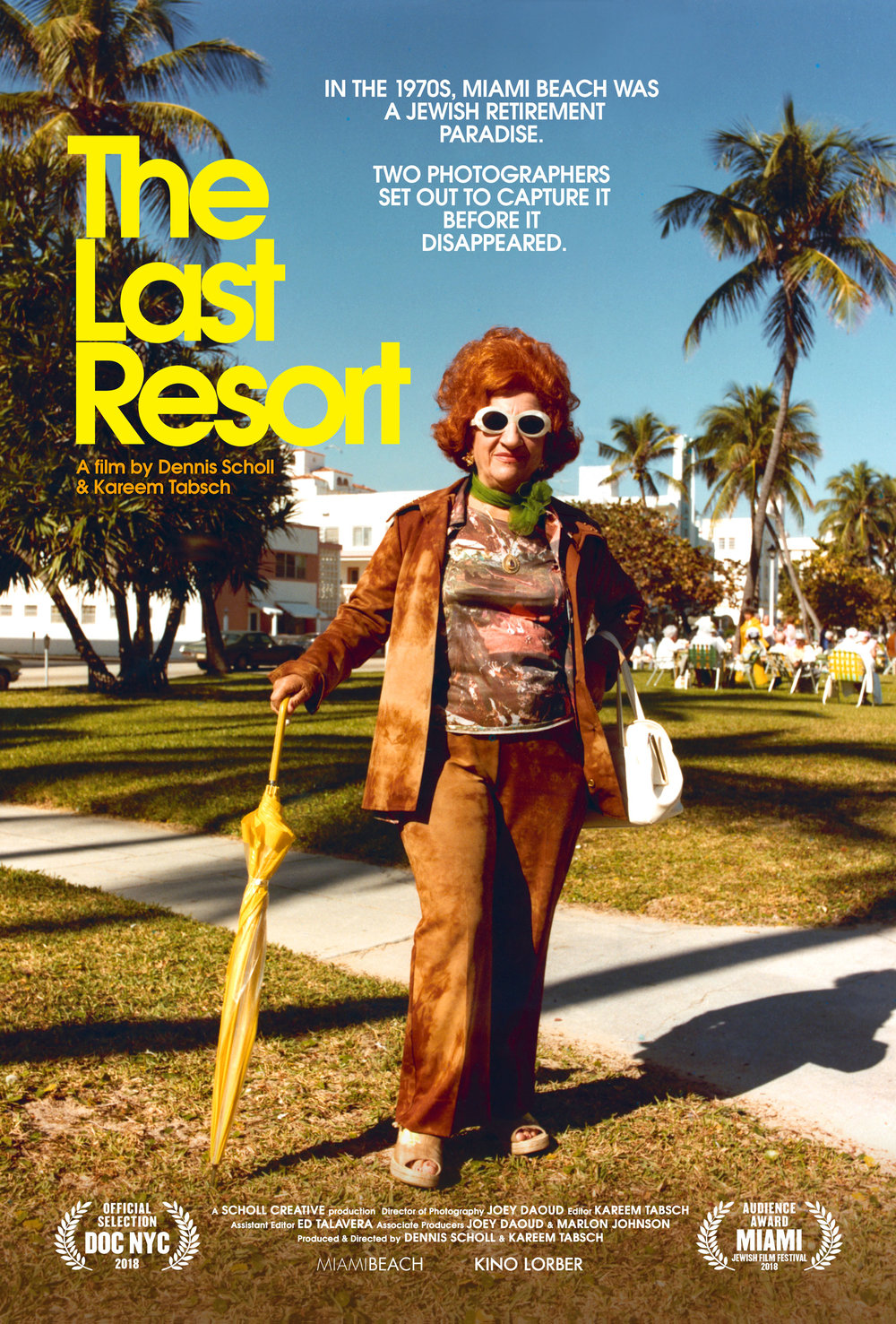By Jim Slotek
The Last Resort: A moment in time when a kosher Miami exploded in colour and life
Awash in colour and sunlight, the doc The Last Resort is both a modern cultural history of the confounding should-be-paradise that is Miami Beach, and a loving bio of a young, short-lived photographer who froze one of its moments in time.
And what a time! Buoyed by a post-war migration of older Jews, many of them from New York, a great many having escaped the Holocaust, it was like a sunlit reward for people who’d struggled their entire lives.
Culturally it manifested itself in the Fountainbleu Hotel, Jackie Gleason’s latter variety TV show and the Rat Pack adopting it as a second home (by his account, Paul Anka wrote “My Way” for Frank Sinatra in his room at the Fountainbleu and delivered it to him the next day). There’s even vintage footage of Fanny Brice extolling Miami.
By the ‘70s, that culture was beginning to literally die off, and two young photographer friends in their twenties – Andy Sweet and Gary Monroe – decided to begin a 10-year project from the mid-‘70s to mid-‘80s depicting a South Beach scene dominated by Jewish seniors that they knew would not be there much longer.
“Imagine South Beach today, but instead of everybody being between 18-28, think of 80 and 82,”says Monroe, who ended up bringing the project to fruition on his own.
For tragic reasons, arguably intrinsic to Miami itself, Sweet would not be there to finish the project. But his style suited the moment he captured, exploding in light and colours framed by sea-blue (whereas Monroe preferred to shoot in Diane Arbus-style black-and-white), preferring candidness to careful composition.
Directors Dennis Scholl and Kareem Tabsch depict him as everybody’s grandson, with smiling, elderly subjects who are glad for the attention, hams for the camera and instinctively inclined to pinch the photographer’s cheeks. (Between cheerful stills, Sweet is remembered by Monroe, his sister Ellen Sweet Moss and reporter/crime-novelist Edna Buchanan)
Sweet captured them dancing, flirting, eating at delis, kibitzing and – the ultimate old Miami pastime – “porch-sitting,” reveling in this bright final chapter in their lives, afforded them by inexpensive art deco apartments and undervalued real estate.
The first half of the movie is, thus, a lovely experience. History turns the ‘80s part of their photo project to tragedy, with the influx of Cuban “boat people,” Central American cocaine cowboys, rising rents on crumbling buildings, and the final degradation of many last days spent in urban poverty. The community was sent packing – the kids to jobs up North, with what remained of the older population moving to other parts of Florida.
As these things go, opportunists would wait until some of the most desirable beach-front real-estate in the country would hit rock-bottom and buy it up (to their credit, largely preserving the art deco beach motif), setting the stage for South Beach as the decadent playground of the rich and famous it is today.
This story is told in pictures, while simultaneously narrowing its focus to individuals. Sweet’s pictures are so alive, The Last Resort becomes the next best thing to being on the beach in 1975.
The Last Resort. Directed by Dennis Scholl and Kareem Tabsch. Starring Gary Monroe, Ellen Sweet Moss, Edna Buchanan. Opens Friday, Feb. 1 at the Hot Docs Ted Rogers Cinema.



